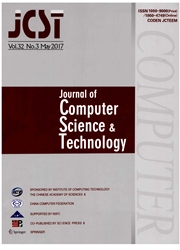

 中文摘要:
中文摘要:
串音在很深的亚微米时代成为了最批评的担心之一。这篇论文在两个处理串音缓解的问题方法学;算法的层次。注意那在全局布线之间的中间的操作;详细路由在串音评价是很有效的;减小,作者建议合并在传统的设计流动被分开成一个综合路由选择方法任务阶段的几中间的步,以便操作能容易合作充分施加他们的通电串音减小。一个有效基于优先级的试探算法被开发,工作由片切它。串音回避,;在路由是批评的许多另外的方面练习包括拥挤, vias,层偏爱,等等,被考虑。轨道保留策略在算法框架被采用补偿顺序的路由引起的不希望得到的效果。一系列 ISPD98 上的试验性的结果;建议途径能没有与一张以前报导的图相比损害结束比率,平均在大约 70% 减少电容的串音的工业基准表演基于算法,表明途径的优点。
 英文摘要:
英文摘要:
Crosstalk has become one of the most critical concerns in very deep sub-micron era. This paper deals with the problem of crosstalk mitigation at both methodological and algorithmic levels. Noting that intermediate operations between global routing and detailed routing are very effective in crosstalk estimation and reduction, the authors propose to incorporate several intermediate steps that are separated in traditional design flow into an integrated routing resource assignment stage, so that the operations could easily cooperate to fully exert their power on crosstalk reduction. An efficient priority-based heuristic algorithm is developed, which works slice by slice. Crosstalk avoidance, and ,nany other aspects that are critical in routing practice including congestion, vias, layer preference, etc., are taken into account. A track reservation strategy is adopted in the algorithm framework to compensate the undesired effects caused by sequential routing. Experimental results on a series of ISPD98 and industrial benchmarks show that the proposed approach is able to reduce capacitive crosstalk by about 70% on average without compromising completion ratio compared with a previously reported graph based algorithm, demonstrating the advantages of the approach.
 同期刊论文项目
同期刊论文项目
 同项目期刊论文
同项目期刊论文
 期刊信息
期刊信息
